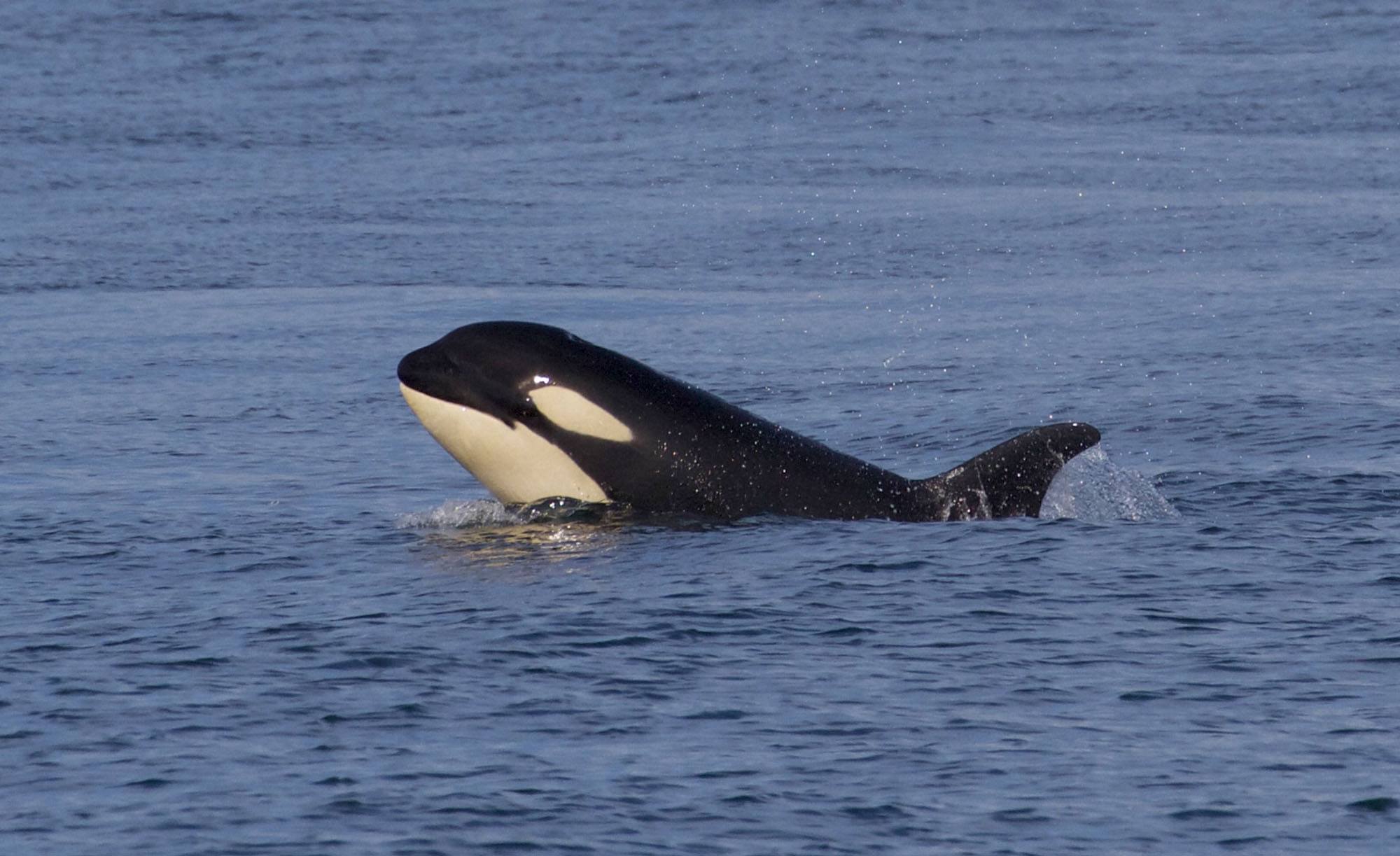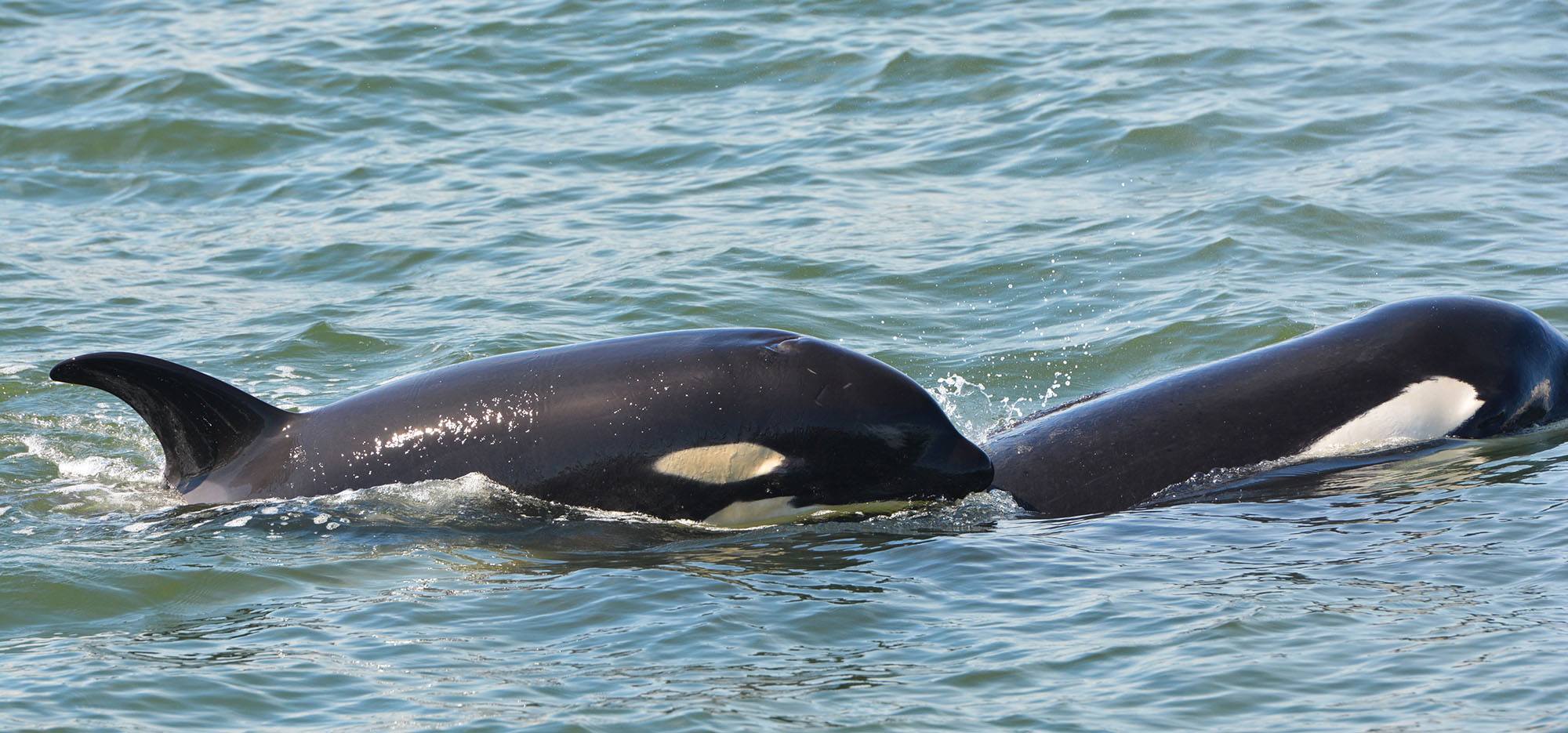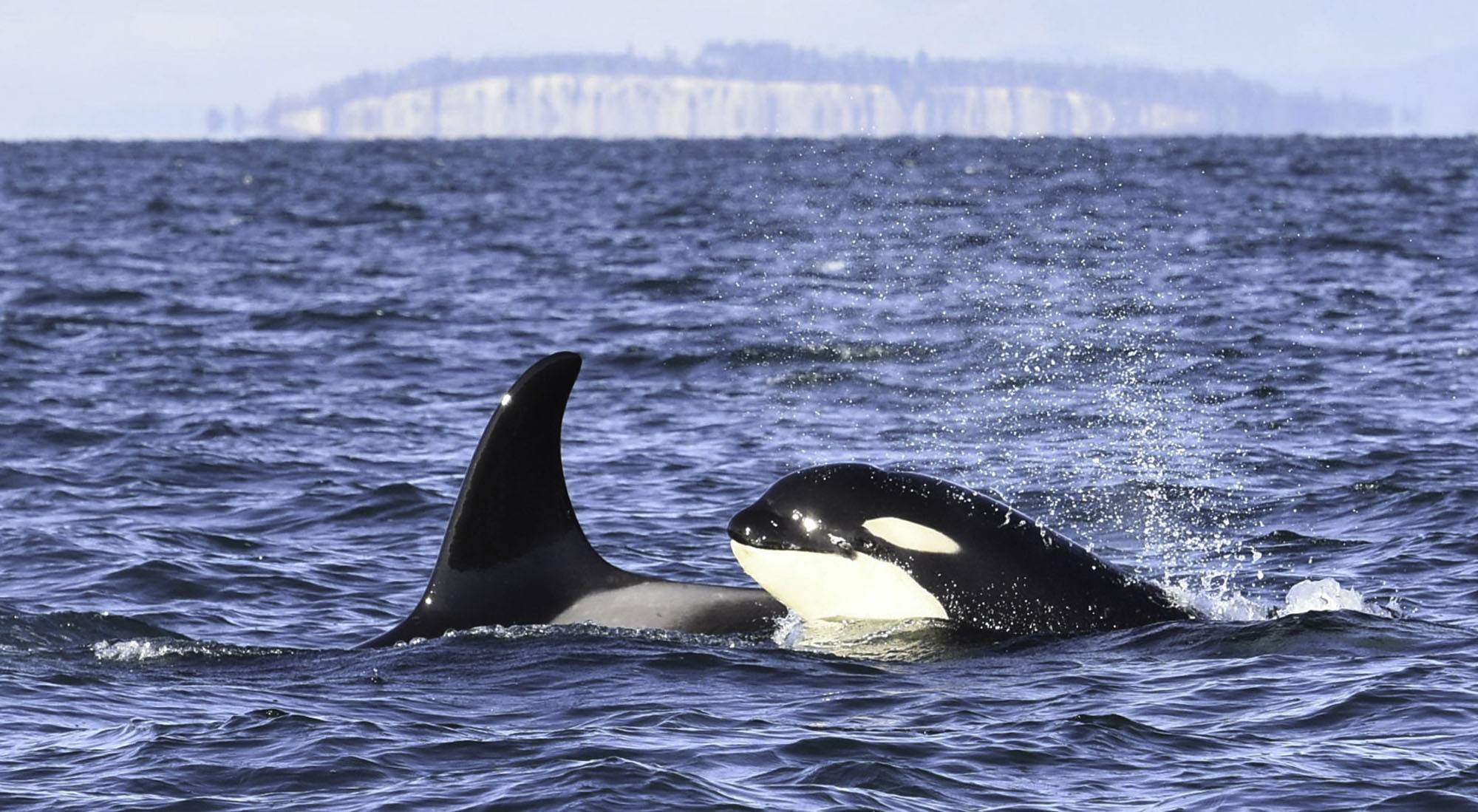18 photos of orca calfs frolicking around the Pacific Northwest

The Pacific Whale Watch Association has released a stunning set of photos, showing the calves of our local killer whales frolicking in the waters around BC.
The calves are the latest additions to the endangered southern resident community of orcas that call the Pacific Northwest home, often seen around Vancouver.
The community is currently seeing a huge baby boom, after two years with no successful births. Here are some of the best baby photos you’ll see all week:
Scarlett

Orca calf Scarlett (J50) with Slick (J16). Photo by Naturalist Tasli Shaw, Steveston Seabreeze Adventures, Richmond, BC.
In December 2014, just as it seemed our killer whales were on an irreversible slide to extinction, a female calf, Scarlett, was born to Slick.
She was thought to have been mid-wifed by her family, pulled out her mother’s womb by other members of J-Pod, literally willed into this world.
Within days whale watchers reported the calf to be remarkably rambunctious, breaching frequently, almost as if she was celebrating her miracle birth.
“I feel very privileged to have the opportunity to watch these calves grow, and to get to know them on an individual level,” said Heather MacIntyre, a Naturalist and Captain for Maya’s Legacy Whale Watching in Friday Harbor.
“Their personalities – or ‘whaleanalities,’ as I call it – are totally unique, and always evolving.”

Orca calf Scarlett (J50) with Slick (J16). Photo by Naturalist Renee Beitzel, Puget Sound Express Whale Watching, Edmonds WA

Orca calf Scarlett (J50) with Slick (J16). Photo by Capt. Gary Sutton, Steveston Seabreeze Adventures, Richmond, BC.

Orca calf Scarlett (J50). Photo by Naturalist/Capt Heather MacIntyre, Maya’s Legacy Whale Watching, Friday Harbor, WA.

Orca calf Scarlett (J50). Photo by Andrew Lees, Five Star Whale Watching, Victoria BC
Nova
Over the next year, seven more calves were born to the southern resident orca community, including Nova, a male calf, born to Eclipse, first spotted in February 2015.

Orca calf Nova (J51) (left) with Shachi (J19). Photo by Capt. Gary Sutton, Steveston Seabreeze Adventures, Richmond, BC.

Orca calf Nova (J51) with Eclipse (J41). Photo by Naturalist/Capt Heather MacIntyre, Maya’s Legacy Whale Watching, Friday Harbor, WA.

Orca calf Nova (J51) with Eclipse (J41). Photo by Naturalist Tasli Shaw, Steveston Seabreeze Adventures, Richmond, BC.

Orca calf Nova (J51). Photo by Naturalist/Capt Heather MacIntyre, Maya’s Legacy Whale Watching, Friday Harbor, WA.

Orca calf Nova (J51). Photo by Naturalist/Capt Heather MacIntyre, Maya’s Legacy Whale Watching, Friday Harbor, WA.
Sonic

Orca calf Sonic (J52). Photo by Naturalist/Capt Heather MacIntyre, Maya’s Legacy Whale Watching, Friday Harbor, WA.
Another male calf, Sonic, born to Aiki, followed swiftly after in March.
“Every time we had a baby born to this population last year, people got giddy,” remembers Michael Harris, Executive Director of PWWA.
“They are in no way out of the woods, we’ve got to get fish to these blackfish, but this is a great milestone and real hope for the future of the Southerns.”

Orca calf Sonic (J52). Photo by Naturalist/Capt Heather MacIntyre, Maya’s Legacy Whale Watching, Friday Harbor, WA.
Magic
 Orca calf Magic (L122) with Muncher (L91). Photo by Andrew Lees, Five Star Whale Watching, Victoria BC
Orca calf Magic (L122) with Muncher (L91). Photo by Andrew Lees, Five Star Whale Watching, Victoria BC
Magic came along in the meantime, a male calf born to Muncher in March 2015.
“It’s frightening to think that their lives hang in a fragile balance,” said MacIntyre.
Deborah Giles, PhD., Director of Research at the Center for Whale Research on San Juan Island says as apex predators, orcas’ entire environment impacts their survival.
“The whales are smart; they know where to go to look for food,” said Giles. “Our job is to make sure there are enough fish, most importantly Chinook salmon, available to them throughout their entire range, from Monterey California to Southeast Alaska.”

Orca calf Magic (L122) with Muncher (L91). Photo by Andrew Lees, Five Star Whale Watching, Victoria BC

Orca calf Magic (L122) with Marina (L47). Photo by Andrew Lees, Five Star Whale Watching, Victoria BC
Dipper

Orca calf Dipper (J54). Photo by Naturalist/Capt Heather MacIntyre, Maya’s Legacy Whale Watching, Friday Harbor, WA.
Dipper, a male calf, arrived in December 2015, born to Polaris.
But by summer 2016, Polaris appeared to have a “peanut head” behind her blowhole that could indicate illness or food deprivation.
Some thought the 23-year-old whale may have been on her last legs, about to make 10-month-old Dipper an orphan.
But crews now report Polaris is looking much better, attending well to her duties as mother and is often seen “leading the way” with her natal pod.
Kiki
Kiki, born to Princess Angeline, was one of the few female calves born in 2015. She was first seen in October.

Orca calves Kiki (J53) with Princess Angeline (J17) and Moby (J44). Photo by Naturalist Tasli Shaw, Steveston Seabreeze Adventures, Richmond, BC.
There are now about 82 orcas in the southern resident community and researchers are finally hopeful for the future of the population.
“These whales never cease to amaze me,” said Harris. “They are absolutely the most resilient and adaptive creature I have ever seen on this planet. They are survivors.”

